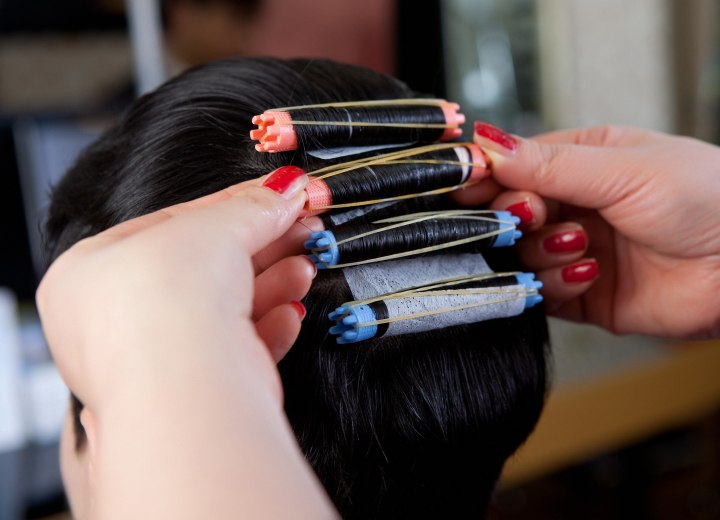Wrapping a Root Perm

I'm particularly concerned about what to do with the ends of the hair that won't be wrapped. How do I protect them from the perming solution dripping down? I want to make sure I do this safely, so any guidance you can provide would be incredibly helpful.
A: Root perms are an excellent solution for clients who want added volume and lift at the scalp without affecting the entire length of their hair. This technique is particularly popular with people who have fine or limp hair that tends to fall flat against the head, especially in shorter styles where traditional volumizing products might weigh the hair down.
For end protection, you have several options that work well. Plastic wrap is one of the most commonly used materials. You can use regular plastic food wrap or specialized salon barrier film. Coated papers designed specifically for this purpose are another excellent choice, as they're manufactured to resist chemical penetration while maintaining flexibility during the wrapping process. Some stylists also use aluminum foil, though this requires more careful handling to avoid sharp edges that could damage the hair.
The amount of protective material you'll need depends entirely on your client's hair length and the desired outcome. For shorter styles where you only want to perm the first two to three inches from the scalp, you'll need less coverage. For medium-length hair where you might want to perm up to four or five inches from the root, you'll need to wrap more of the hair shaft to ensure the solution doesn't migrate down to areas you want to keep natural.
When applying the protective wrap, start by sectioning the hair as you would for a regular perm, but pay special attention to creating clean, even sections since precision is crucial for achieving uniform results. Begin wrapping the plastic or coated paper around the hair shaft at the point where you want the perm to stop taking effect. This is typically about two to four inches from the scalp, depending on the desired look.
The technique requires careful attention to the application of the perming solution as well. You'll want to apply the solution only to the exposed root area, working methodically to ensure even saturation without allowing excess product to seep under the protective barrier. Use a smaller applicator bottle or brush to maintain better control over where the solution goes.
One important consideration is that root perms require more frequent touch-ups than traditional perms, since the new growth will be straight while the previously permed hair maintains its curl pattern.
©Hairfinder.com
See also:
Perms
What is a root perm?
What is a spot perm?